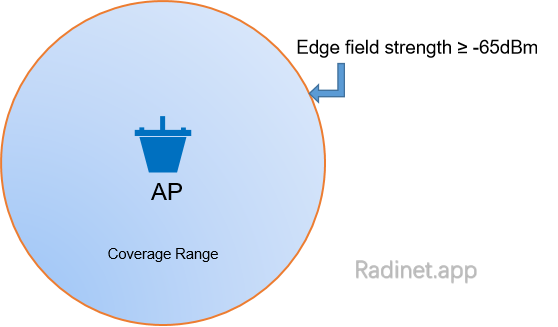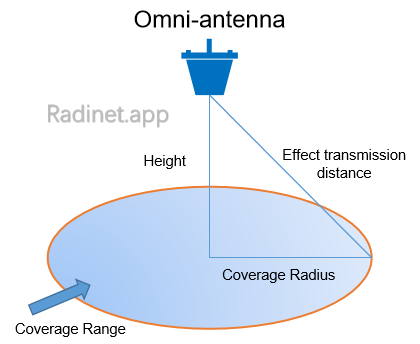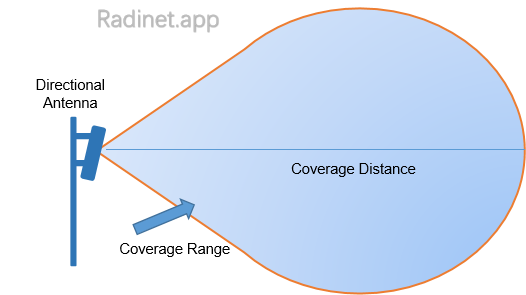Coverage Range
An AP transmits radio signals through antennas and generates WLAN coverage around the antennas. The signal strength becomes weaker as radio signals are transmitted further. Typically, the area where the signal strength around an antenna is greater than the edge fild strength is called the network coverage range, as shown in Figure 1
The fild strength of radio signals at the coverage edge is called the edge fild strength. For example, if the signal strength value in a common coverage area is –65 dBm, the edge fild strength must be greater than or equal to –65 dBm.

Coverage Radius
The coverage range of an omnidirectional antenna is gauged by its coverage radius. For instance, when an access point (AP) equipped with an omnidirectional antenna is mounted on the ceiling, as illustrated in Figure 2, the installation height is determined through site survey.
The effective transmission distance of radio signals can be computed based on the edge field strength. For a detailed explanation of the calculation method, refer to the "Coverage Calculation" section. Once the installation height and effective transmission distance are established, the coverage radius of the antenna can be calculated, thereby determining the effective coverage range of radio signals.

Coverage Distance
The coverage range of a directional antenna is determined by its coverage distance. For instance, an outdoor AP equipped with directional antennas may be mounted on a pole, as illustrated in Figure 3. The installation height of the AP is determined through a site survey. The effective transmission distance from the antennas to the coverage edge can be calculated using a specific formula. Subsequently, the coverage distance of radio signals can be determined.
